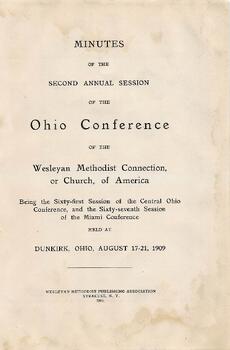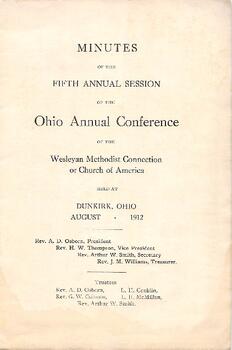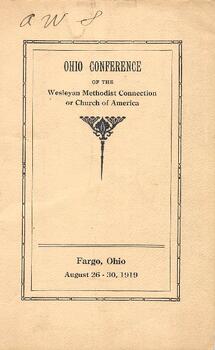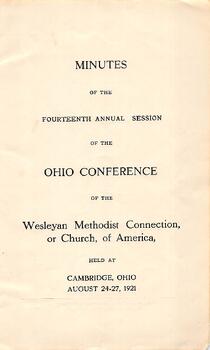Identity elements
Reference code
Name and location of repository
Level of description
Title
Date(s)
- 1908 (Creation)
Extent
1-10000
Name of creator
Administrative history
The Wesleyan Methodist Church of America emerged in response to the Methodist Episcopal Church's support of slavery and its centralized, authoritarian governance. In November 1842, leaders O. Scott, J. Horton, and L. R. Sunderland withdrew from the Methodist Episcopal Church and launched The True Wesleyan, a weekly publication explaining their reasons for separation. In December, Luther Lee and L. C. Matlack also withdrew, marking the formal beginning of the Wesleyan movement. Although earlier separations had occurred—particularly in Michigan, where a conference was established—these events laid the foundation for the official organization. The first church of the new denomination was founded in Providence, Rhode Island. In February 1843, a preliminary convention was held in Andover, Massachusetts, which led to a General Convention in Utica, New York, on May 31, 1843. There, the Wesleyan Methodist Church was officially organized and adopted a governing Discipline. The first General Conference convened in October 1844 to revise this Discipline, followed by a second in October 1848, which produced a more comprehensive and clearly organized version.
Content and structure elements
Scope and content
This series comprises records from the Ohio conference. They capture the district’s role as a vital regional hub within the wider church. The materials include minutes from district conferences, correspondence between local pastors and district leaders, reports from area churches, pastoral appointments, membership and financial statistics, and policy documents specific to the region.
These records reveal how the district guided and supported local congregations and clergy, implemented denominational policies on a regional level, and fostered church growth and ministry within the community.
System of arrangement
Conditions of access and use elements
Conditions governing access
Physical access
Technical access
Conditions governing reproduction
Languages of the material
Scripts of the material
Language and script notes
Finding aids
Acquisition and appraisal elements
Custodial history
Immediate source of acquisition
Appraisal, destruction and scheduling information
Accruals
Related materials elements
Existence and location of originals
Existence and location of copies
Related archival materials
Related descriptions
Notes element
General note
The General Conference of 1907, taking account of the depleted condition of the original Miami body, authorized the uniting of the Miami Conference with the Central Ohio Conference to form a new body called the Ohio Conference. From that time the name Miami as a conference title disappears from the active records.
In the spring of 1966, several members of the Ohio Conference issued a "Manifesto" outlining their concerns with The Wesleyan Methodist Church and their intended course of action. President Leslie D. Wilcox and his advisory board met with the group and advised that if they remained committed to the views expressed in the manifesto, it would be best for them to withdraw from the denomination. In the weeks that followed, eleven congregations voted to withdraw, with most joining the newly formed Bible Methodist Church, which had been established by dissidents from the Alabama Conference.
In 1968 the Ohio conference had 47 organized churches and 1,476 total members.
General note
Following the uniting of the Miami and Central Ohio Conferences under the new name of the Ohio Conference, beginning with 1908, the following served as president:
J. T. Brown , 1909-11
L. L. Folger, 1911-12
A. D. Osborn, 1912-17
A. W. Smith, 1917-31
J. M. Williams, 1931-35
Leslie D. Wilcox, 1935-48, 1963-66
R. J. Stratton , 1948 - 53
Donald C. Fisher, 1953-63
Donald E. Howard, 1966-68






